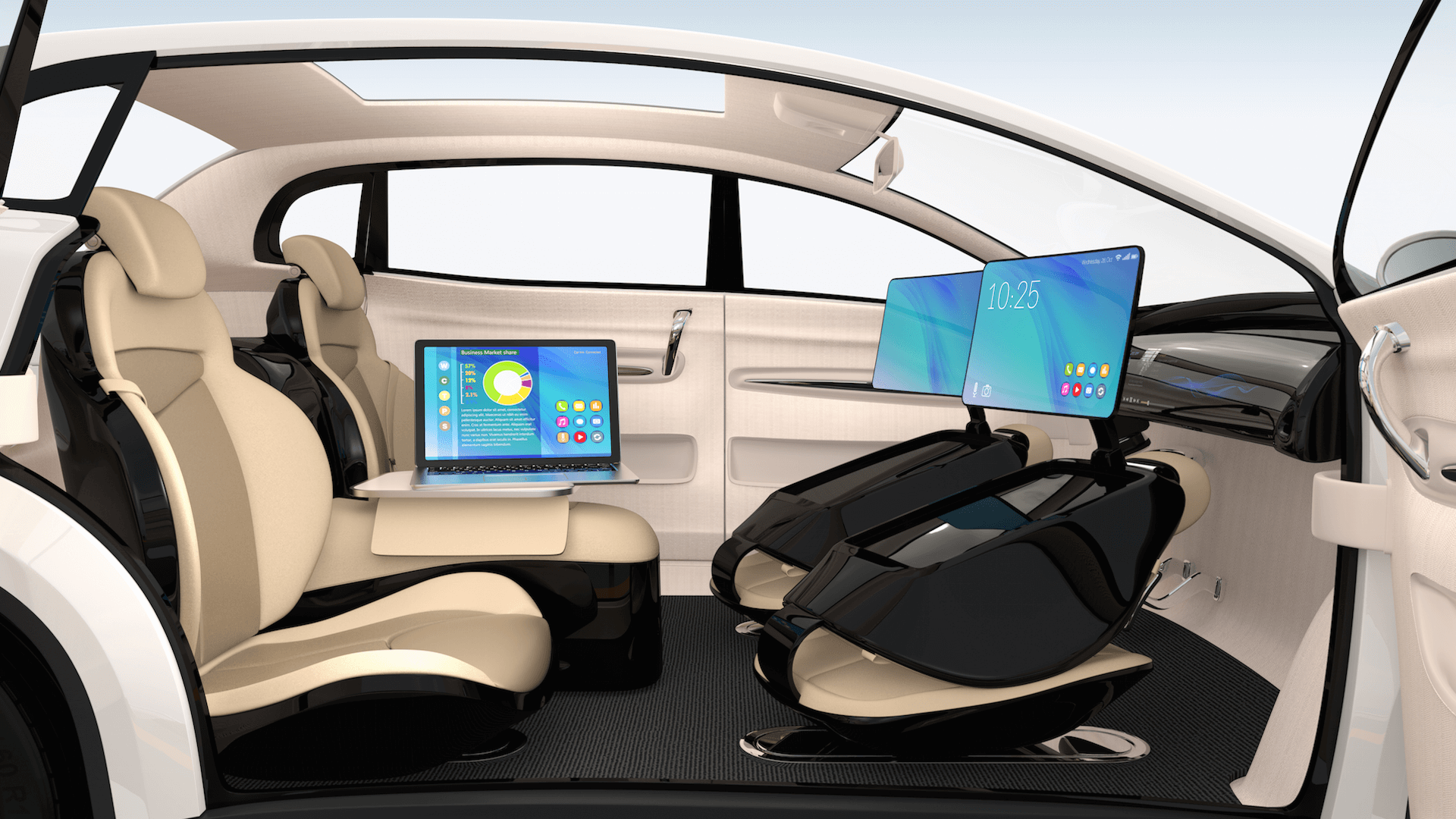Will autonomous vehicles provide the next screens for publishers and advertisers?
New Forrester report suggests self-driving vehicles could become a new universe of moving living rooms.
If and when autonomous vehicles arrive, it’s difficult to envision anything more frightening than a massive tractor-trailer truck hurtling down the highway with no one at the wheel.
But, from a marketer’s point of view, the good news is that all those self-driving vehicles — including trucks — will essentially become moving living rooms. And that means a new universe of publishing and advertising opportunities.
“Get ready for your car to become yet another ‘screen’ where publishers and advertisers compete for your attention,” says a new report from Forrester, “Autonomous Vehicles Will Reshape the Global Economy.”
“Don’t be surprised,” the report warns, “when you start to see big brands sponsoring your rides: ‘This trip is brought to you by the champagne of beers — Miller High Life.’”
Of course, an alcoholic beverage paying for the trip to pick up your five-year-old from kindergarten may seem incongruous. But report co-author and Forrester VP/Group Director Carl Doty told me that ads are only the beginning of marketing opportunities in the upcoming world of driverless vehicles.
For instance, the report speculates, brands may want to create enveloping experiences on the way to your destination.
A family trip via autonomous car to Florida’s Disney World could begin with Disney-provided entertainment displayed on screens in the car’s interior that turn it into a “pirate ship.”
Doty agreed there’s every reason to expect that car interiors could become surrounded with screens, speakers and interactive sensors in ways that living rooms or dens — which still need room so people can walk through them — cannot.
The report also suggests that automakers may evolve into publishers of this kind of car-based news and entertainment, given that they will have direct customer relationships with the owners of what are essentially mobile media theaters. From the report:
We can even imagine a “Vegas rules” mentality at this stage, where the windows on the cars appear opaque from the outside — because they are infotainment screens. What happens in the car, stays in the car.
The possibilities for marketing, advertising and entertainment represent only a portion of this report, which is mostly focused on the transformative impacts that autonomous vehicles will have on other parts of society, including shipping, logistics, insurance, government and data security/privacy.

From the Forrester report
If coordinated with each other, self-driving vehicles could reduce or eliminate traffic, but they could also increase unemployment, such as all those jobless truck drivers.
Doty added that self-driving vehicles could also entirely change our view of cars, trucks and driving. Instead of symbols of freedom, for instance, cars could become resources to rent when needed, like trains or planes, since cars are hugely underutilized. According to the report, the average vehicle in the UK is parked 96 percent of the time.
Given the countless ways in which technology can glitch, I asked Doty how he could be so optimistic about self-driving vehicles — especially since these glitches would take place at 65 mph with a family inside.
He pointed to Forrester’s assessment of the reliability of predictive analytics, image recognition, obstacle avoidance tech currently in many cars and so on, including the advent of standardized vehicle-to-vehicle communication and sensors in roads.
Think of the auto-pilots in every commercial aircraft, he suggested. I noted that there’s a lot of space up there where planes fly, as opposed to cars and trucks whizzing along highways a few dozen feet from each other — at best.
Doty countered by pointing to Tesla’s self-driving cars, and to the fact that 94 percent of all accidents are caused by humans.
“And I’m a driving enthusiast,” he said, adding that his own vehicles had stick shifts and V-8 engines. But driving your own car may become prohibitively expensive at some point, he suggested.
At any rate, the opportunities presented by humans sitting in vehicles with nothing to do except talk or read are not happening tomorrow. (Although here’s a video clip of the first self-driving commercial truck trip, for Budweiser):
Doty expects autonomous vehicles will become common in the trucking industry within 10 years, with widespread adoption among consumers within 20 to 30 years. Singapore (where there are already autonomous car trials), Hong Kong and other congested cities will probably go first.
Plenty of time for Disney to get those in-car “pirate ship” presentations ready.
Opinions expressed in this article are those of the guest author and not necessarily MarTech. Staff authors are listed here.
Related stories
